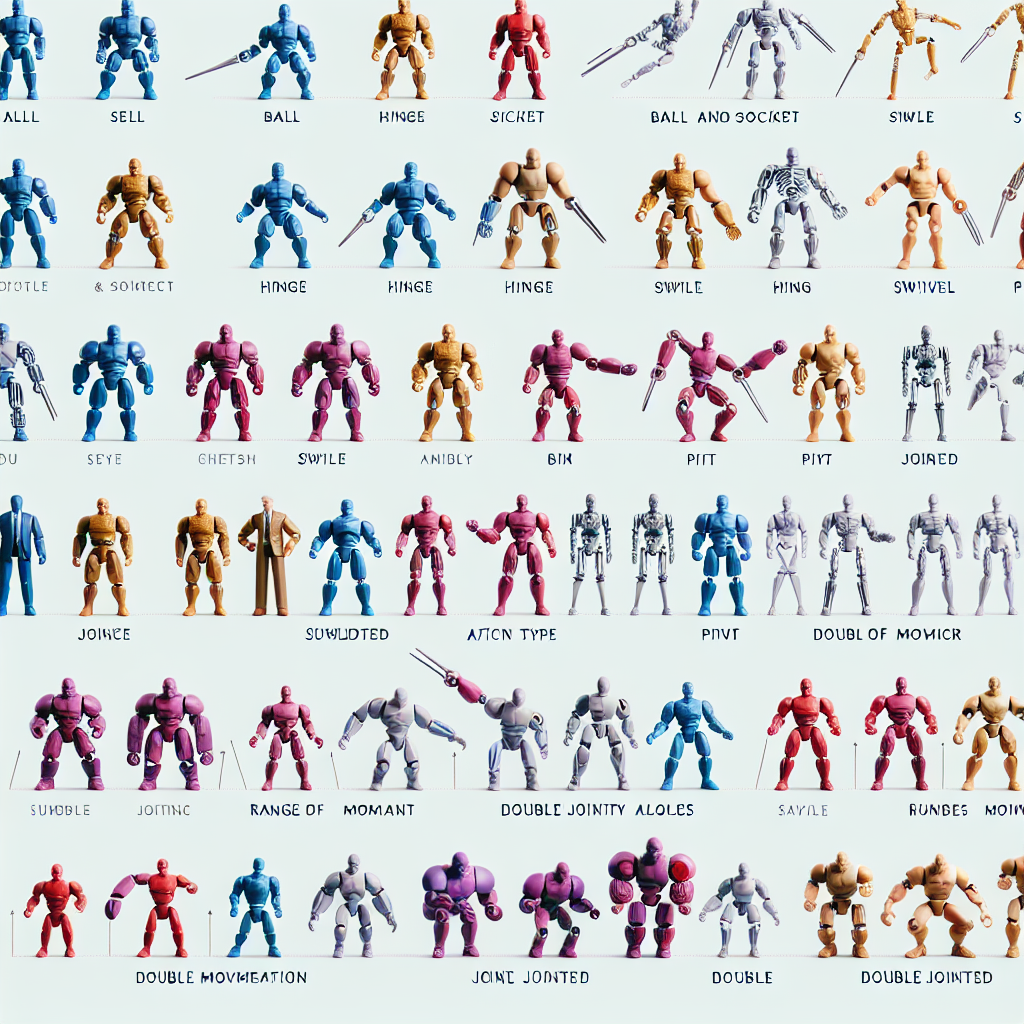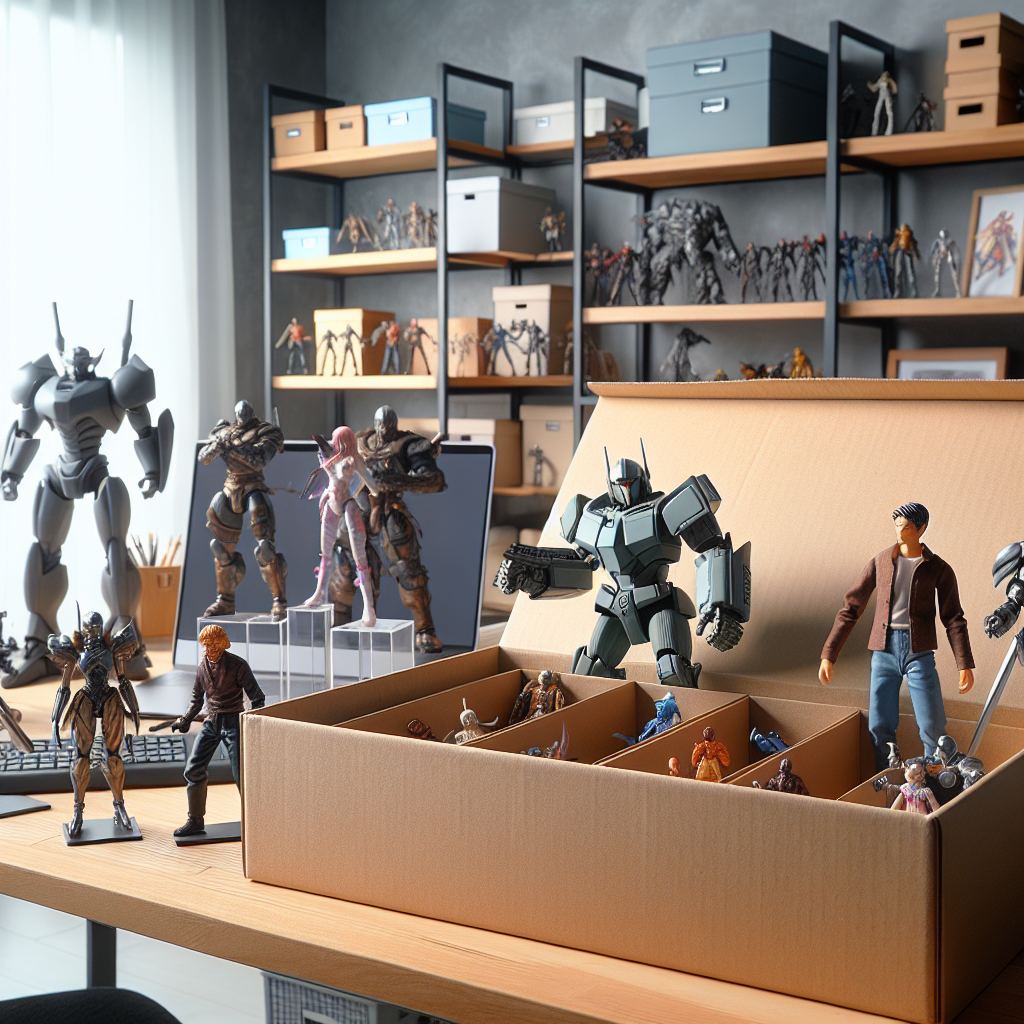Detailed Comparison of Different Action Figure Joints and Their Range of Motion
Action figures have captivated the imagination of collectors and enthusiasts alike for decades. One of the key features that elevate these figures from mere toys to collectable art is their joints and articulation. This blog post dives into the detailed comparison of various action figure joints, focusing on their range of motion, and highlights essential types like ball-joint and swivel joints. Understanding these components can enhance your collecting experience and help you choose the right figures for your collection.
Understanding Action Figure Joints
Action figures utilize different kinds of joints to provide various degrees of movement. Articulation is crucial for posing the figures in dynamic ways, making them more appealing to collectors. Here’s a breakdown of the common types of joints found in action figures:
- Ball-Joint: This joint allows for multi-directional movement, enabling the figure to rotate and tilt in several angles. A ball-joint typically consists of a spherical ball that fits into a socket, providing a broad range of motion.
- Swivel Joint: This is a simpler type of joint that allows rotational movement in one plane. Swivel joints are often found in the arms and legs of action figures and are essential for basic posing.
- Pivotal Joint: Pivotal joints work similarly to ball-joints but are more limited in motion. They allow for bending or swiveling in a specific direction, making them suitable for the knees and elbows.
- Hinge Joint: This joint permits movement in one direction, similar to how a door swings open and closed. Hinge joints are typically seen in the elbows and knees, providing up-and-down motion.
Comparison of Range of Motion in Different Joints
To fully appreciate the capabilities of various action figure joints, let’s examine their range of motion:
- Ball-Joint: The versatility of ball-joints is unmatched, offering a full 360-degree rotation. This range allows for posing in various angles, making them ideal for figures that necessitate multiple dynamic poses.
- Swivel Joint: Swivel joints usually allow for 180-degree rotational motion. Although not as flexible as ball-joints, they provide adequate mobility for standard poses, especially in figures that require stability.
- Pivotal Joint: This joint offers limited rotational movement, typically around 90 to 180 degrees, depending on the design. While not as flexible as ball-joints, pivotal joints can aid in creating realistic movement, especially in the arms and legs.
- Hinge Joint: Hinge joints restrict movement to one linear direction, offering around 90 to 120 degrees of motion. This limited range suits actions like bending elbows and knees but does not allow for complex poses.
Advantages and Disadvantages of Each Joint Type
Understanding the pros and cons of each joint type can help collectors make informed decisions about which action figures to purchase:
- Ball-Joint:
- Advantages: High versatility, multi-directional movement, allows for very expressive posing.
- Disadvantages: Potential for looseness over time, making it harder to maintain poses.
- Swivel Joint:
- Advantages: Simple and easy to manipulate; provides good stability.
- Disadvantages: Limited range of motion compared to ball-joints, making poses less dynamic.
- Pivotal Joint:
- Advantages: Offers realistic movement suited for articulated posing.
- Disadvantages: Less flexibility than ball-joints, leading to fewer pose options.
- Hinge Joint:
- Advantages: Simple design, reliable for maintaining poses.
- Disadvantages: Insufficient range of motion for dynamic posing.
Having a variety of joints in a collection can help create diverse dioramas and poses. When selecting action figures, consider the articulation and the movement potential that each joint type offers.
Conclusion: Choose Wisely for Maximum Enjoyment
In conclusion, understanding the distinctions between various action figure joints is pivotal for maximizing both enjoyment and display potential. Ball-joints offer unparalleled flexibility for dynamic poses, while swivel joints provide adequate stability. Pivotal and hinge joints have their place, often serving to accurately represent realistic human motion.
When adding to your collection, think about what articulation and range of motion matter most to you. Whether you’re a casual collector or a passionate enthusiast, knowing about joints, articulation, and how to manipulate them can significantly enhance your experience. Happy collecting!




